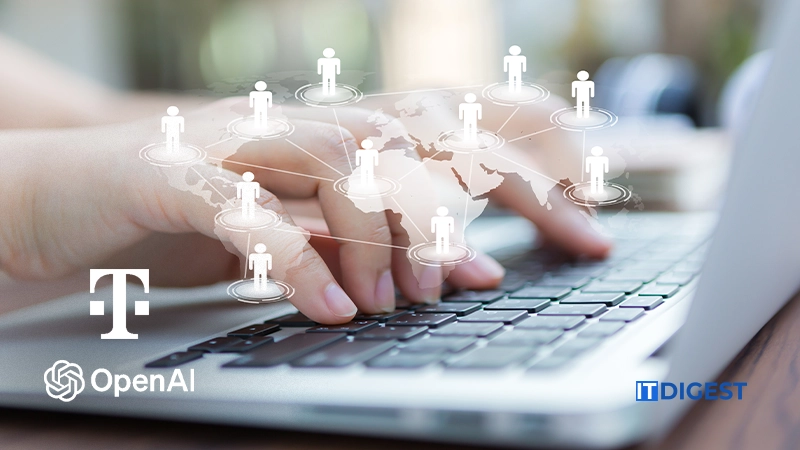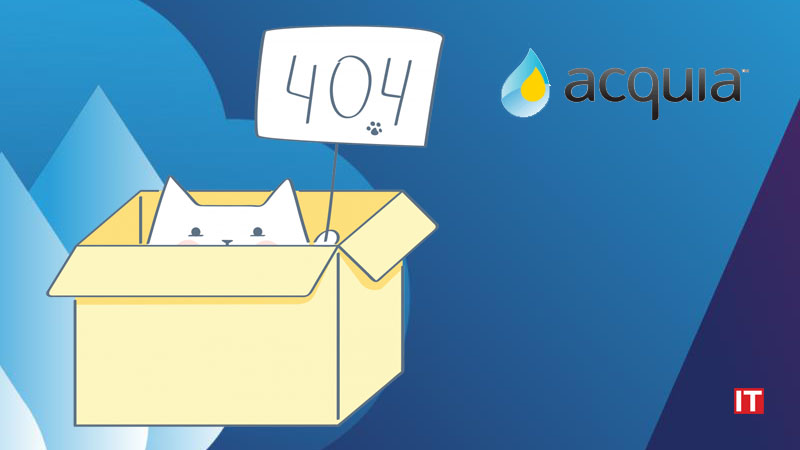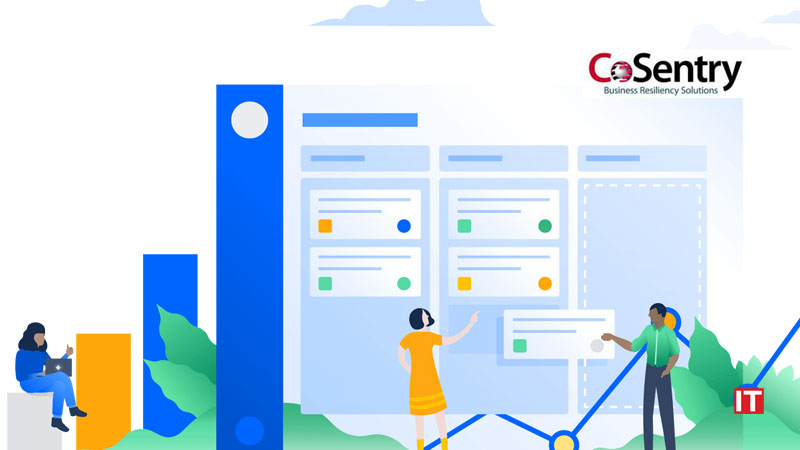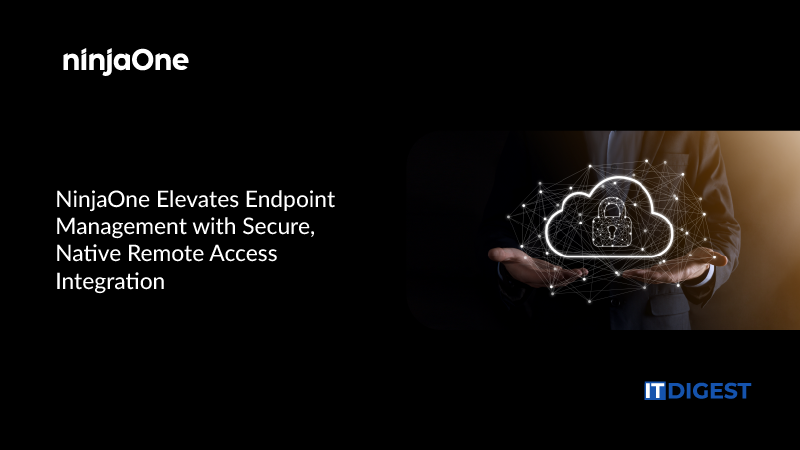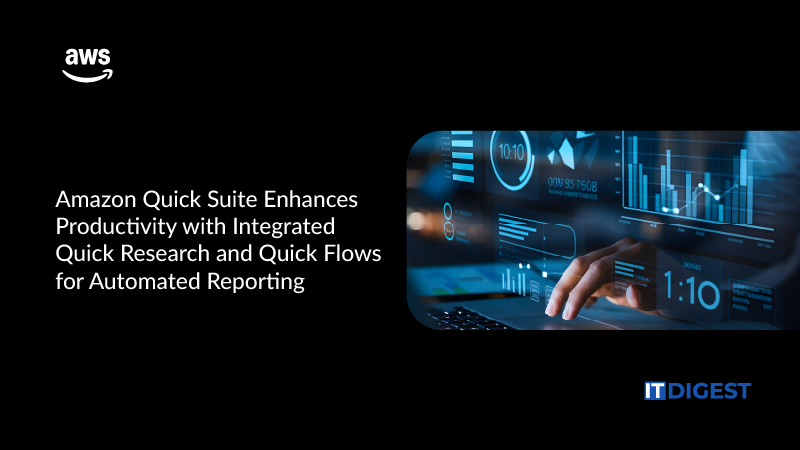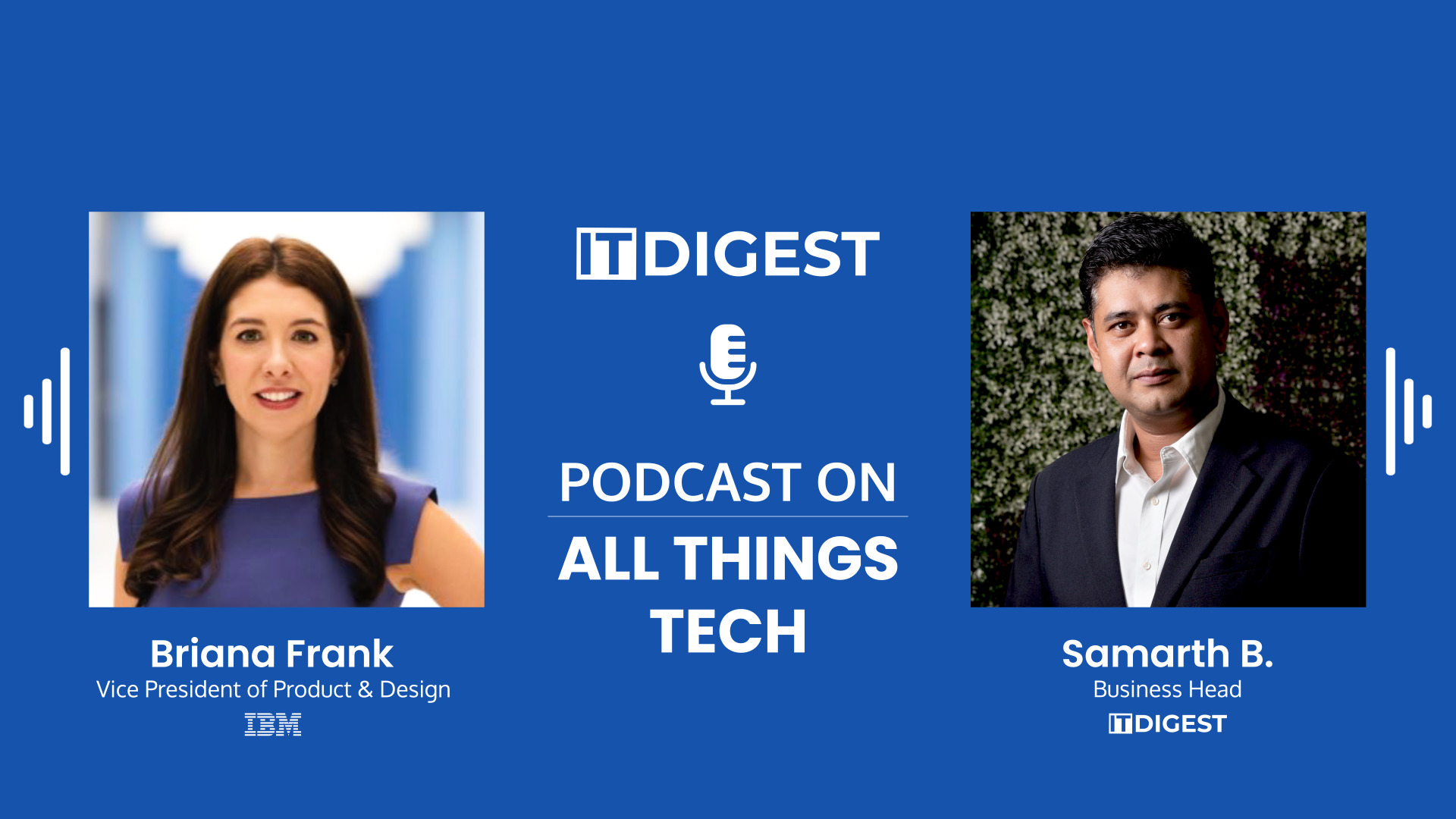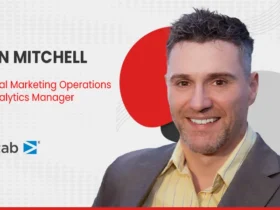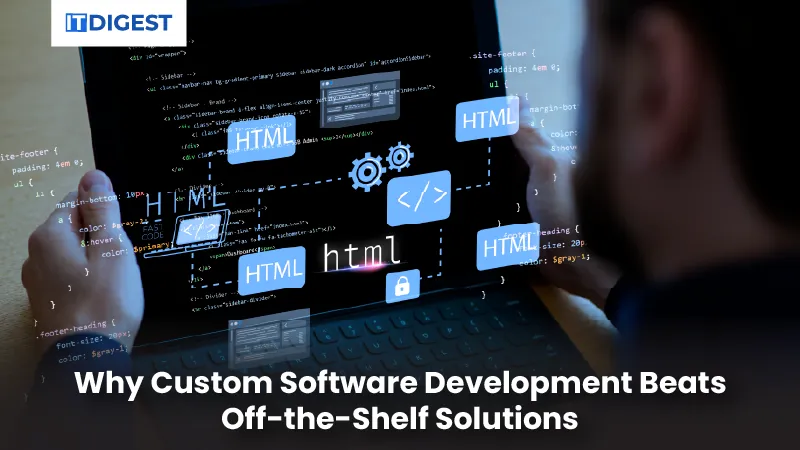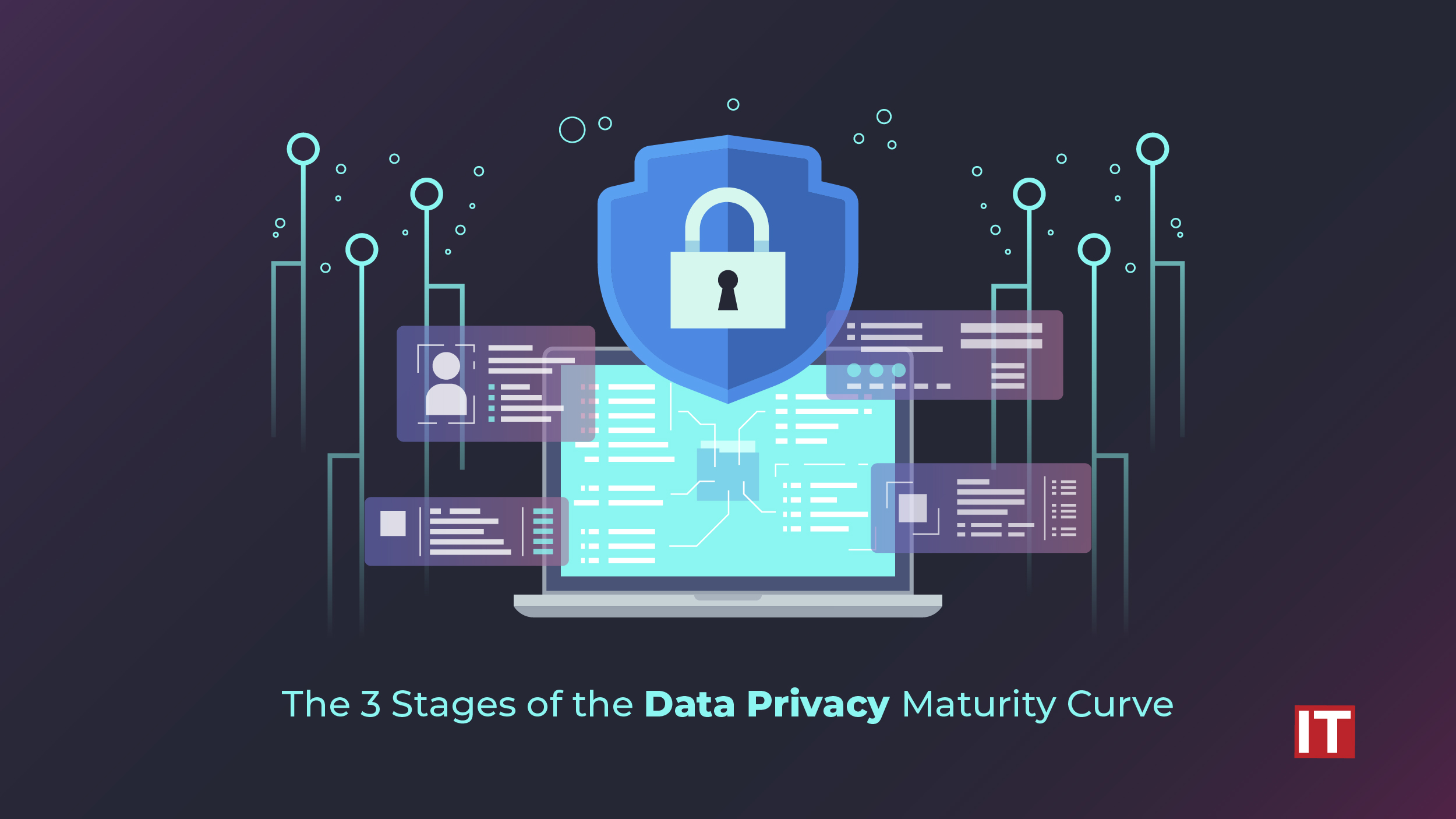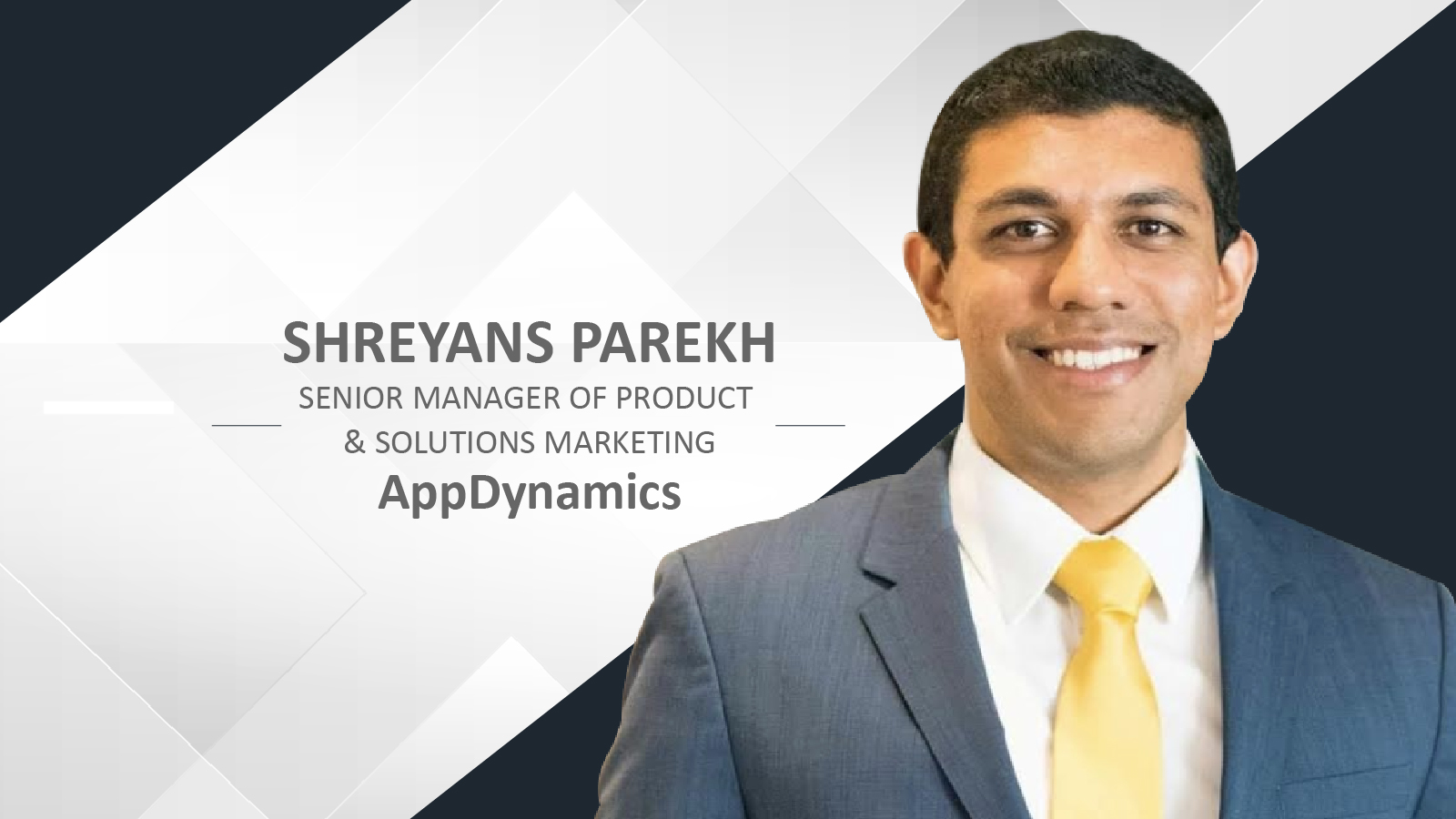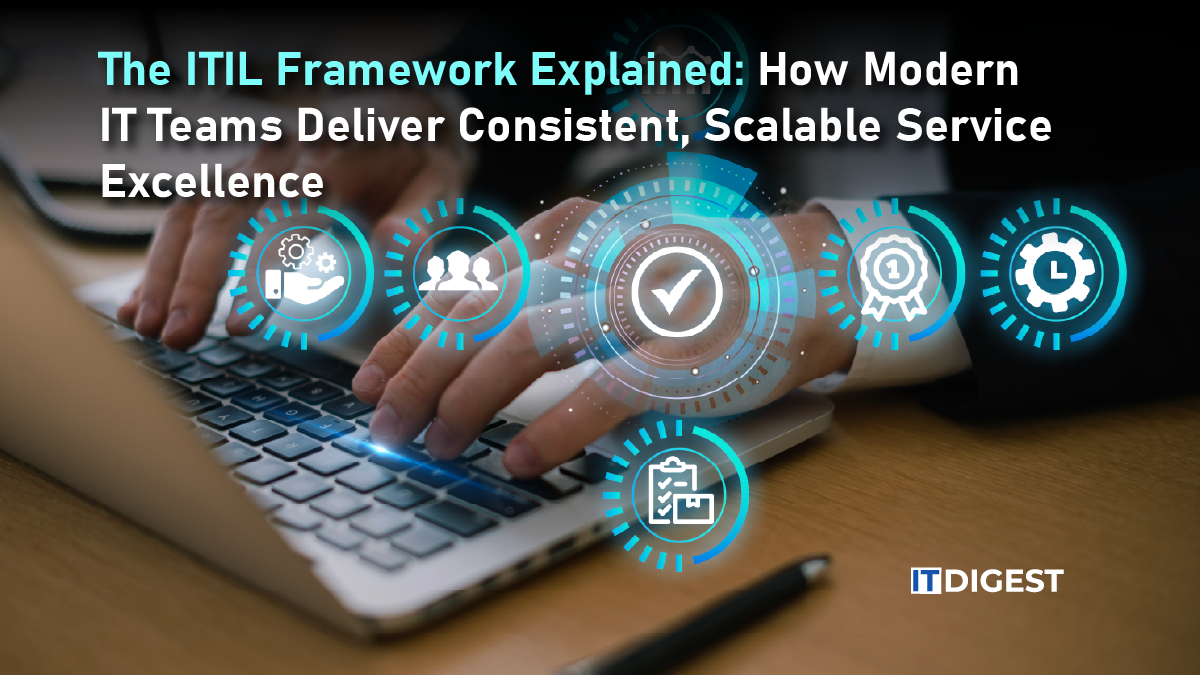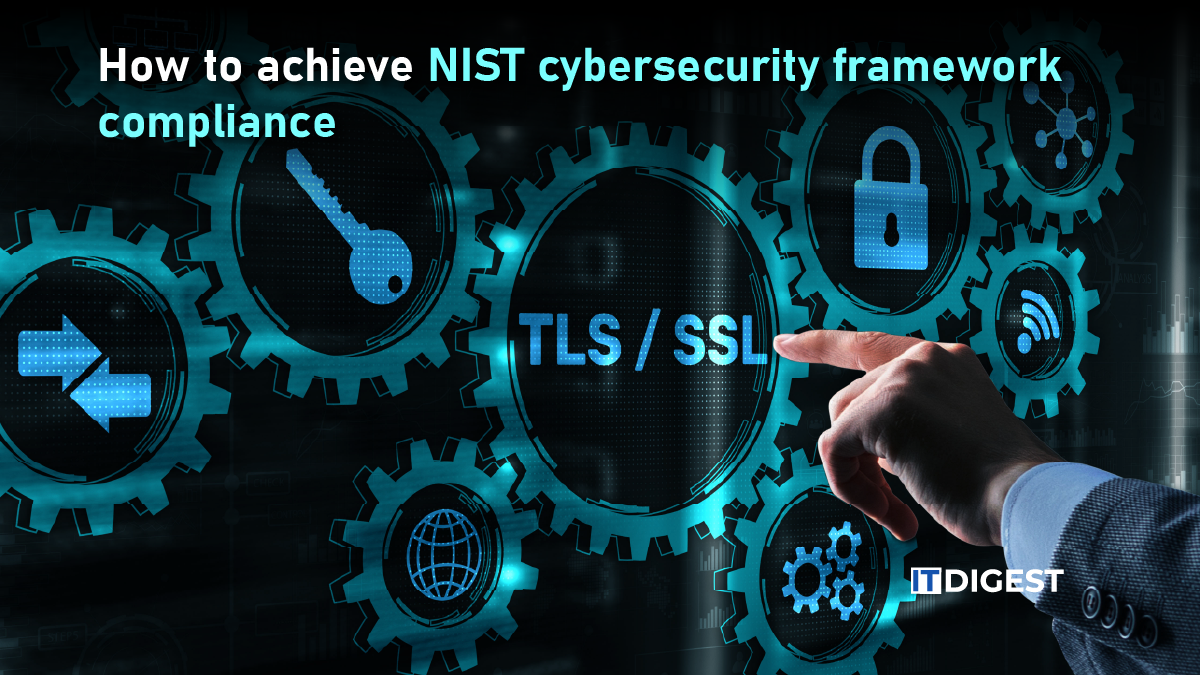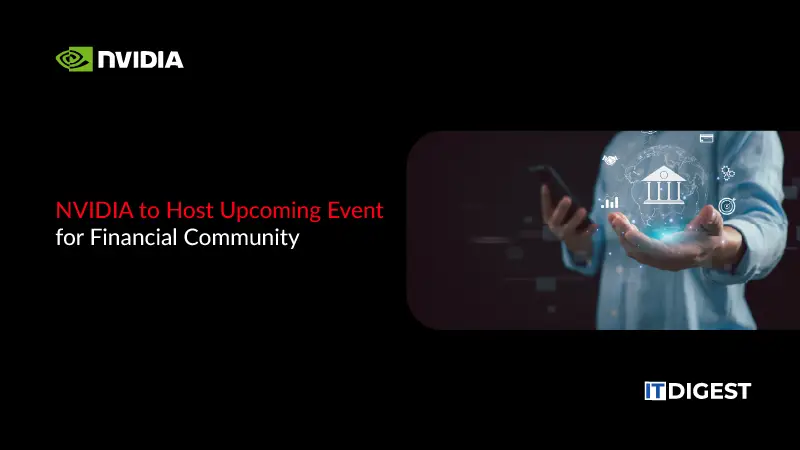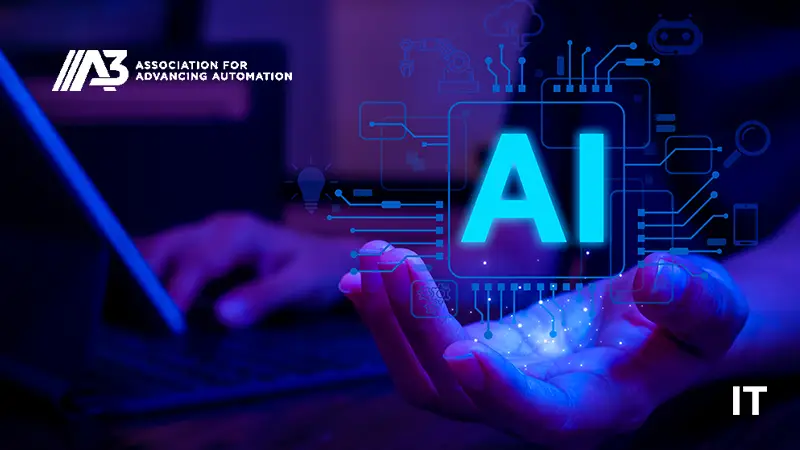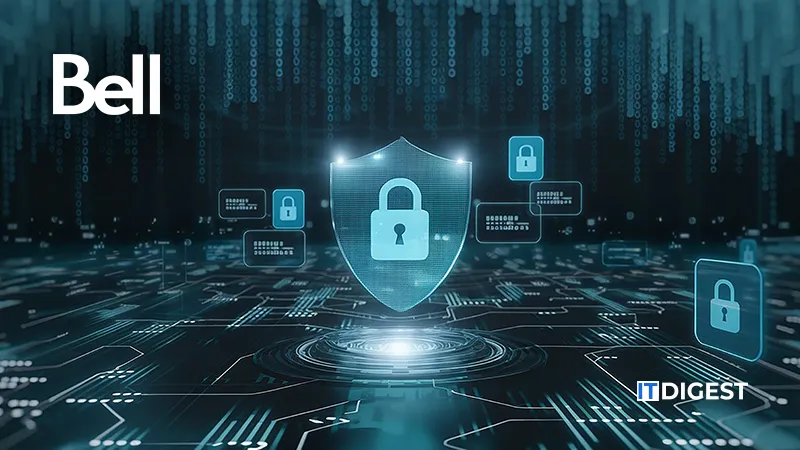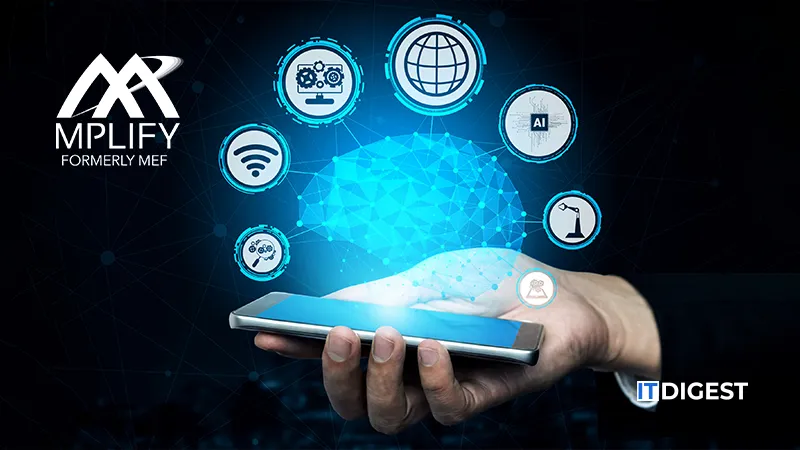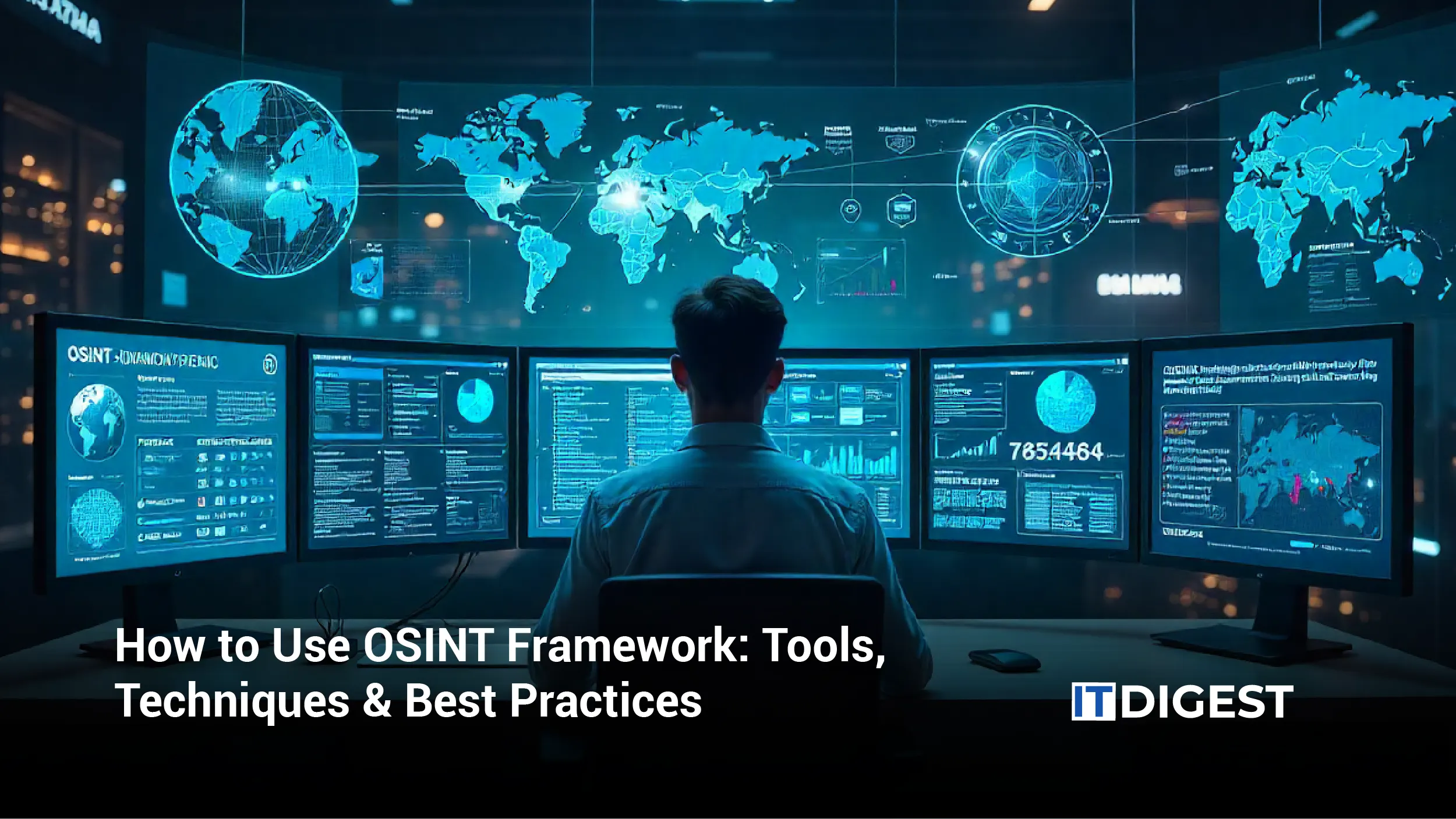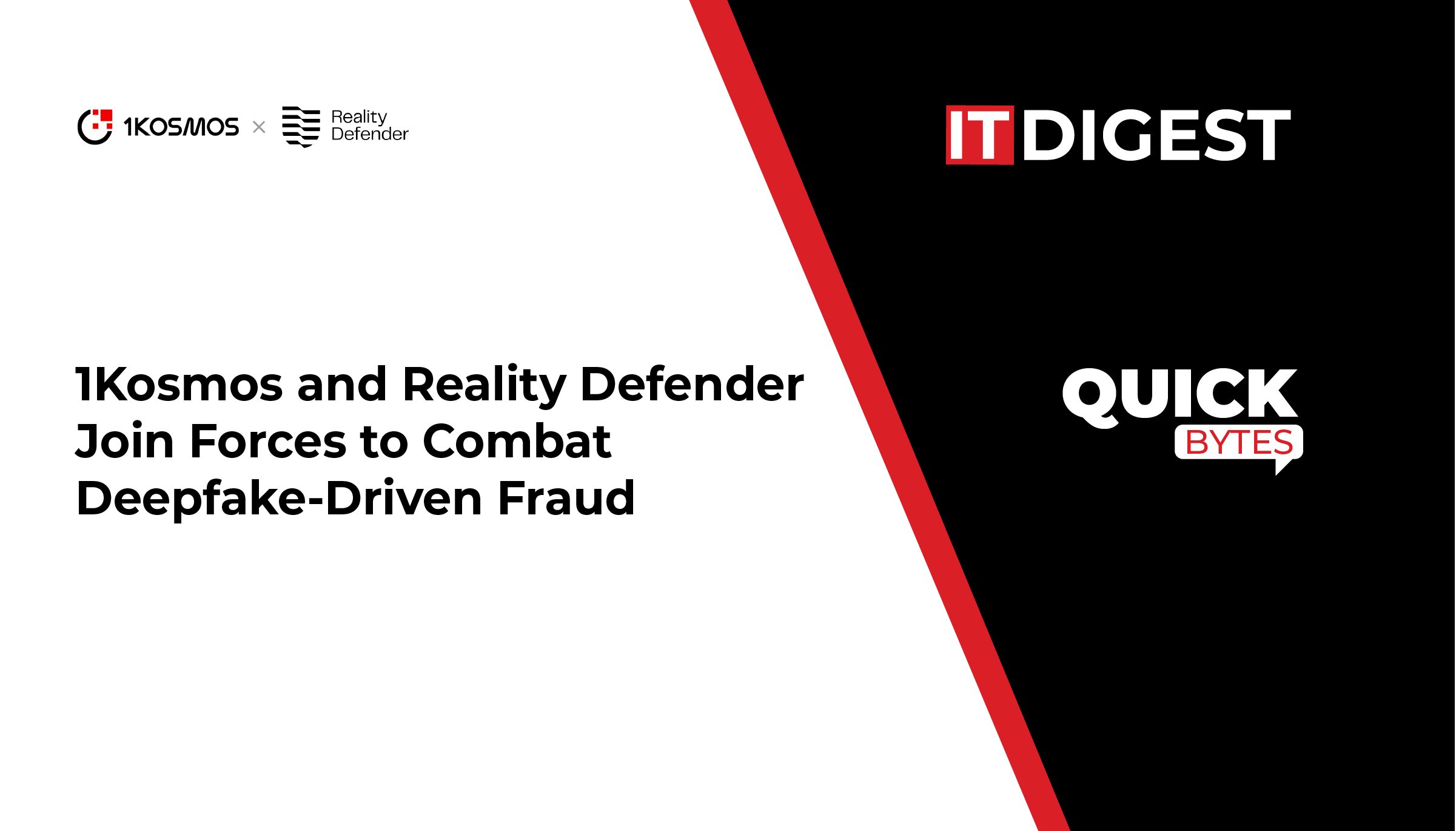OSINT means Open-Source Intelligence. Simply put, it’s finding useful information from sources anyone can access. This isn’t hacking or spying. It’s looking, collecting, and connecting the dots from what’s already online. Do it right, and analysts, security teams, and businesses can make smarter decisions.
The OSINT Framework makes that process easier. It’s a guide that organizes tools and resources into clear categories. Instead of wandering online blindly, you know where to look and what matters. It organizes tools and resources into categories like emails, domains, social media, and metadata. Instead of jumping around blindly online, you have a map. You know where to look, what to check, and how pieces of information fit together.
Population numbers from the 2025 U.S. estimates show why context matters. Analysts who combine OSINT techniques with verified data can spot trends and patterns more effectively. This article will walk you through the framework, show how to use the tools, and explain how to apply principles to get trustworthy, actionable insights.
Understanding the OSINT Framework
Open-source intelligence can be chaotic if you just start clicking around. The OSINT Framework is your guide. Imagine a map that points you exactly where the useful stuff lives. It divides tools into categories like usernames, emails, domains, social media, metadata. Each one shows you what to check first and what to explore next. It keeps you focused and saves a lot of wasted time.
Getting around the map is simple. Decide what you need. Want to track someone online? Begin with usernames and social media tools. Digging into a website or network? Domains and IPs are your starting point. The way the framework connects everything makes moving between categories easy. No guessing, no dead ends.
It’s more than a list of links. The framework fits into a bigger process: collect, check, and verify. That order is crucial. Data without context is just noise. INTERPOL’s 2025 Africa Cyberthreat Assessment Report shows more than 2/3rd of member countries reported rising cybercrime. Following a structured approach helps analysts to spot patterns, connect dots, and act before small problems become big ones.
In short, the OSINT Framework turns scattered online data into insights you can actually use. Beginners get a starting point. Experts move faster. It doesn’t do the thinking for you, but it makes intelligence work smarter, cleaner, and reliable.
Essential Tools within the Framework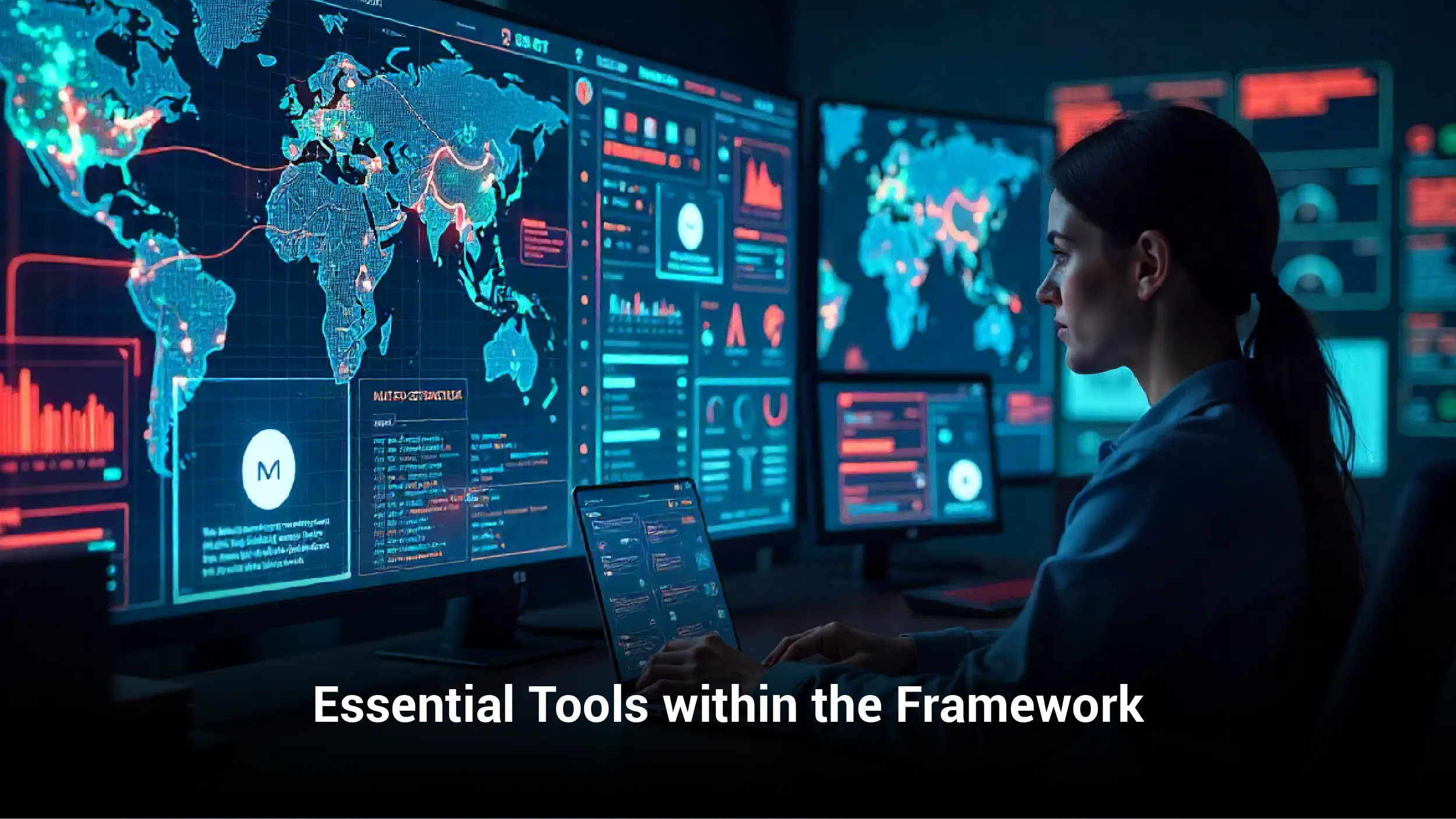
Tools are what turn OSINT from theory into action. You can spend hours clicking around online, but without the right tools, you’re guessing. Start with email and username searches. Hunter.io or CheckUsernames let you see where an email or username appears online. That first step can uncover connections, accounts, and patterns you might otherwise miss. It’s the digital footprint, and it’s usually where investigations start.
Domain and IP analysis is next. Tools like Whois lookup or ViewDNS.info show who owns a website, how it’s set up, and even past records. You can see relationships between sites or trace the origin of an email. It’s not flashy, but it gives you a bigger picture, and without it, you’re only scraping the surface.
Social media and people search tools bring the digital identity into focus. Twint or SocialCatfish help track profiles, activity, and interests. You can see patterns, connections, and behavior without leaving traces. When you combine this with email and domain info, the puzzle starts to come together.
Metadata analysis is often overlooked but can be surprisingly revealing. ExifTool, for instance, can pull hidden info from images or files with timestamps, locations and device details. A single photo might tell you when and where it was taken, which can give real clues if you know how to use it.
These tools aren’t just for security work. Businesses can use them too. For example, the IMF’s July 2025 World Economic Outlook Update puts global growth at 3.0%. Analysts can look at company domains, watch digital activity, and then compare what they find with IMF data. The World Economic Outlook Database adds extra context, like inflation, trade, and fiscal trends, helping turn scattered online signals into real insight. It turns scattered online signals into something meaningful.
Used together, these tools give you structure. Email, domain, social media, and metadata analysis form the backbone of OSINT work. Alone, they are pieces of data. Combined, they become insight you can act on.
Also Read: What Data Analytics Automation Means for Your Business Growth
Practical OSINT Techniques
Collecting information online is easy. Turning it into useful intelligence is harder. That’s where OSINT techniques come in. Start with digital footprinting. Everyone leaves traces online, from emails to social media posts. Tools like Hunter.io or Twint help you uncover these traces. To stay safe, use sock puppets. They are fake accounts that let you explore without exposing your real identity. It’s simple but crucial for security.
Advanced search operators take your investigation further. Basic Google searches only scratch the surface. Using operators like ‘site:,’ ‘intitle:,’ or filetype filters lets you uncover information that might otherwise stay hidden. Pair this with footprinting, and you can connect emails, usernames, or documents back to your target.
Images often carry hidden clues. Reverse image search and geolocation tools can reveal where and when a photo was taken. Even a single social media picture can provide location hints or device information. Analysts use this to confirm details and link online activity to real-world events.
Data triangulation and validation are what turn findings into intelligence. One source is rarely enough. Cross-check usernames across platforms, confirm domain ownership, and compare results with official records. FBI reports show why this matters. The 2025 Use-of-Force Data Update and the 2024 Reported Crimes Statistics give analysts solid, verified information. They can spot patterns, detect threats, or support investigations with confidence.
Combine the techniques, and the results get stronger. Footprinting uncovers leads, advanced searches dig deeper, images add context, and triangulation confirms what’s real. Miss a step, and the investigation loses strength. Done right, OSINT isn’t just about collecting data. It becomes actionable insight, helping analysts, security teams, and businesses make decisions before small problems turn into major ones.
Best Practices for High-Quality Intelligence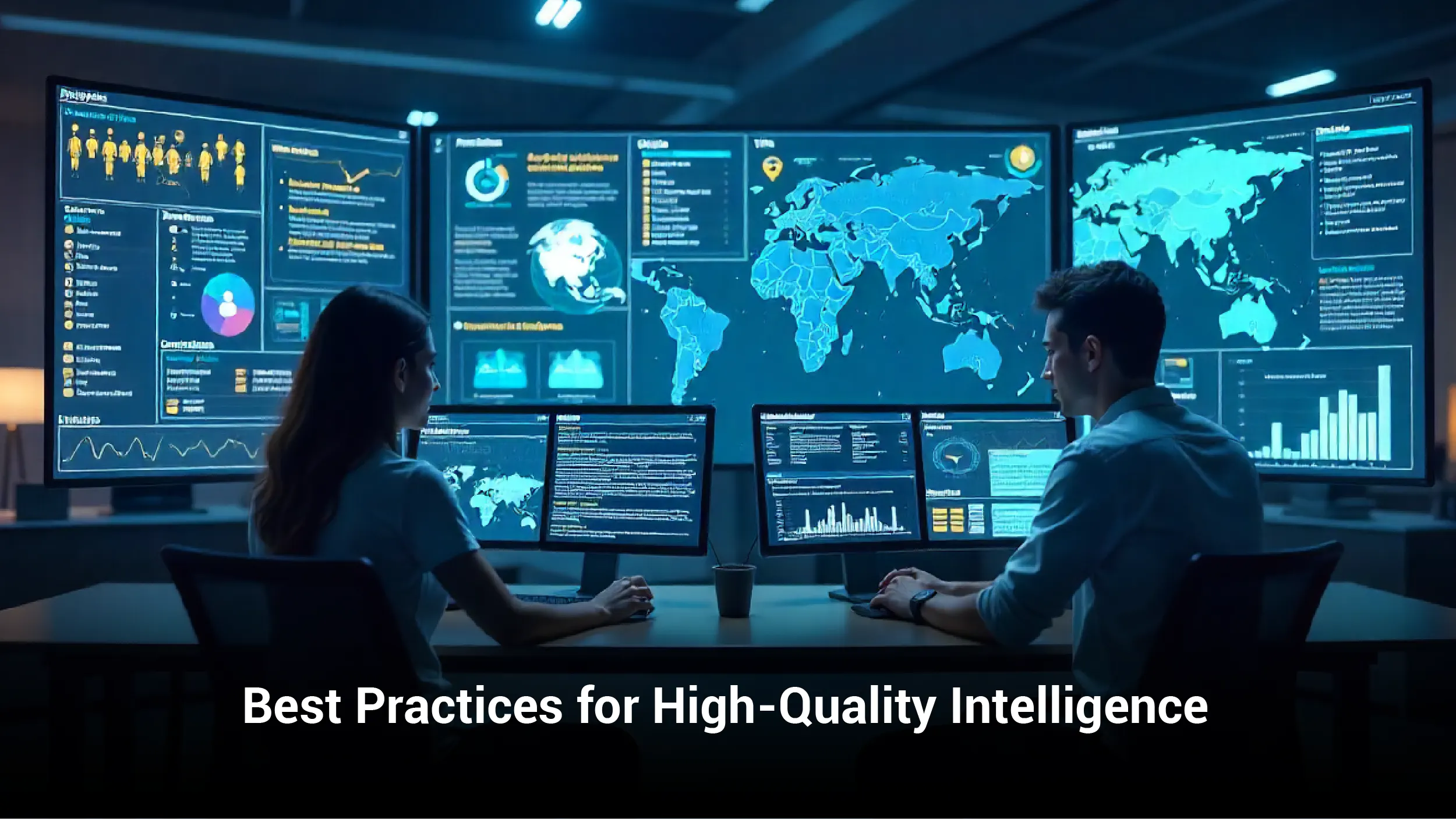
Finding data online is easy. Using it the right way is not. First, protect yourself. VPNs, fake accounts, and sandbox environments are the basics. They keep you safe while you work online. One mistake and your investigation can blow up. Plan every step. Don’t assume safety just because something is online.
Follow the rules. OSINT isn’t free-for-all. Laws are different everywhere. Ethics matter even when rules are silent. If you ignore this, your work loses credibility. At worst, it could get you into real trouble.
Write down what you do. Track sources, steps, and findings. Clear notes make it easier to check your work and let others understand it too. Look at WHO’s 2025 World Health Statistics or the Mental Health Atlas 2024. They show why structured data matters. Analysts who follow examples like these can see trends, spot gaps, and make recommendations that actually mean something.
Keep learning. Tools change. Threats evolve. Methods that worked last year might fail today. Try new techniques. Check older work. Stay sharp. That’s the difference between random data collection and professional intelligence.
Good intelligence mixes safety, ethics, and clarity. Protect yourself. Follow the rules. Document everything. Learn continuously. Do this, and your work stops being just data. It becomes insight you can act on. Insight that helps analysts, security teams, and businesses make decisions before small issues turn into big problems.
End Note
The OSINT Framework is not a list of tools. It’s a way to make sense of online information. Emails, domains, social media, and metadata all matter. Miss one, and you get an incomplete picture.
Protect yourself. Use fake accounts. VPNs help. Think before you post anything. Follow the rules. Keep notes. Learn as you go. The 2024 American Community Survey proves it: organized, checked data shows patterns. It tells a story. It shows you what’s really happening. It helps you make better decisions.
The framework only works when one uses it properly. Look at it as a skill, not a shortcut. Stay curious. Keep learning. Keep learning. Do it properly, and random data becomes insight you can trust. Insight you can act on. That’s the difference between guessing and actually knowing what’s happening.


